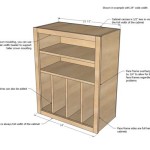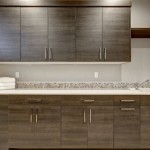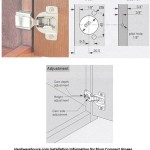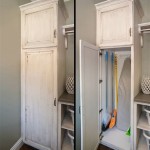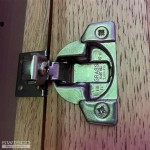How High Should Cabinets Be Above Countertop?
The distance between your countertops and cabinets, also known as the "backsplash height," is a crucial design element that influences both the functionality and aesthetics of your kitchen. Striking the right balance between comfort and visual appeal is essential, and this guide will provide you with all the necessary information to determine the optimal height for your cabinets.
Factors to Consider
When determining the backsplash height, consider the following factors:
- Workspace Comfort: You want to be able to reach your cabinets comfortably while working at the countertop. An ideal height allows you to access items without straining or reaching too far.
- Kitchen Layout: The overall layout of your kitchen can impact the cabinet height. If your cabinets are located near a stove or sink, you may need to adjust the height to accommodate appliances or plumbing fixtures.
- Personal Height: The height of the people who primarily use the kitchen should be taken into account. Taller individuals may prefer higher cabinets, while shorter individuals may benefit from lower cabinets.
- Décor and Aesthetics: The backsplash height can also influence the aesthetic appeal of your kitchen. A taller backsplash can create a more dramatic look, while a shorter backsplash can offer a more streamlined appearance.
Standard Heights
While there is no universal standard height for cabinet placement above countertops, there are some commonly accepted ranges:
- Standard Height: 18 inches (46 cm) is the most common height for cabinets above countertops, providing a comfortable reach for most people.
- Lower Height: 15 inches (38 cm) is a good option for shorter individuals or kitchens with limited space.
- Higher Height: 21 inches (53 cm) or more is suitable for taller individuals or to create a more dramatic look.
Measuring and Installation
To accurately measure and install your cabinets at the correct height, follow these steps:
- Measure the Wall: Using a measuring tape, determine the distance from the countertop surface to the ceiling.
- Subtract the Cabinet Height: From the measurement in step 1, subtract the height of your cabinets.
- Mark the Backsplash Height: Transfer the remaining measurement (from step 2) to the wall using a pencil or chalk line to indicate the desired backsplash height.
- Install the Cabinets: Align the top of the cabinets with the marked backsplash height and secure them to the wall.
Additional Considerations
- Crown Molding: If you plan to install crown molding above your cabinets, factor in its height when measuring for the backsplash.
- Tile Backsplash: If you intend to install a tile backsplash, make sure to consider the thickness of the tiles and any necessary grout lines.
- Ventilation: If you have a stovetop or oven beneath the cabinets, ensure there is adequate ventilation space above the range hood to prevent heat buildup.
Conclusion
Determining the optimal height for cabinets above countertops requires careful consideration of various factors, including workspace comfort, kitchen layout, personal height, and aesthetics. By understanding the standard heights, measuring accurately, and customizing based on specific needs, you can achieve both functionality and visual appeal in your kitchen.
How High Should Kitchen Cabinets Be From The Countertop Quora

Standard Upper Cabinet Height Bulacanliving

How High Upper Cabinets Should Be From Your Floor And Countertop

How High Should Be Your Upper Kitchen Cabinets

Cabinet Countertop Clearance To Be Mindful Of When Considering Wall Cabinets

How High Should You Hang Your Upper Kitchen Cabinets

Pin On Kitchens

How High Upper Cabinets Should Be From Your Floor And Countertop

Height Between Upper Cabinets And Counters Kitchen Elevation

Upper Cabinet Height For Kitchens Solved Bob Vila
Related Posts

